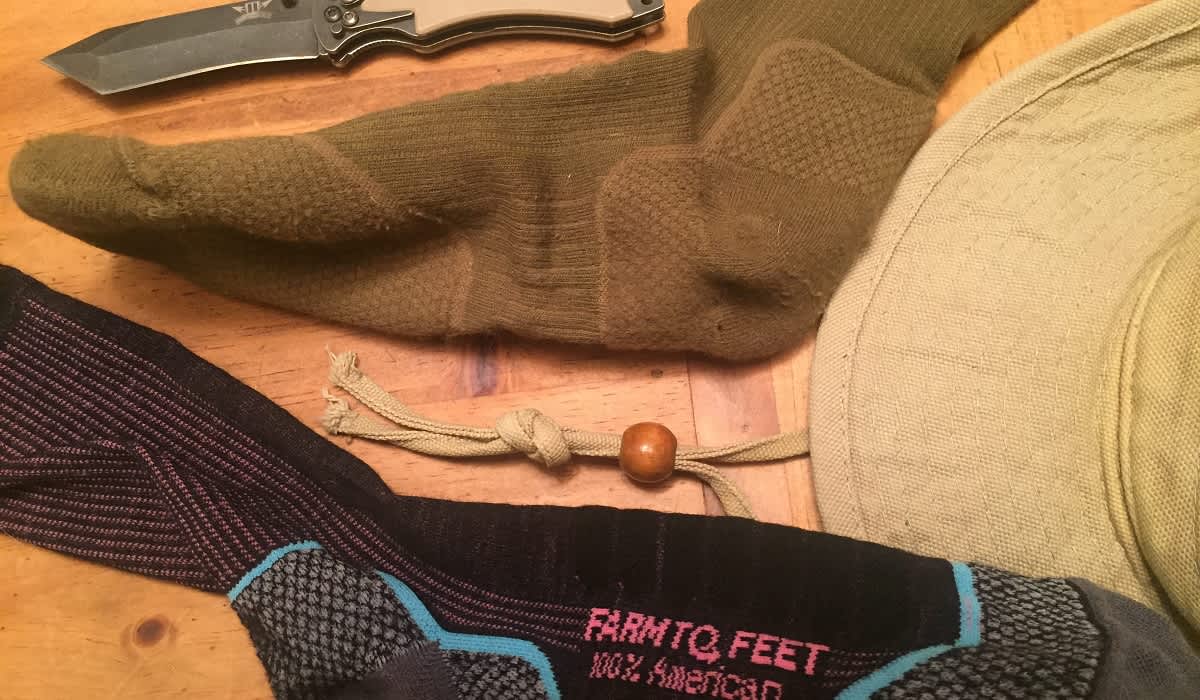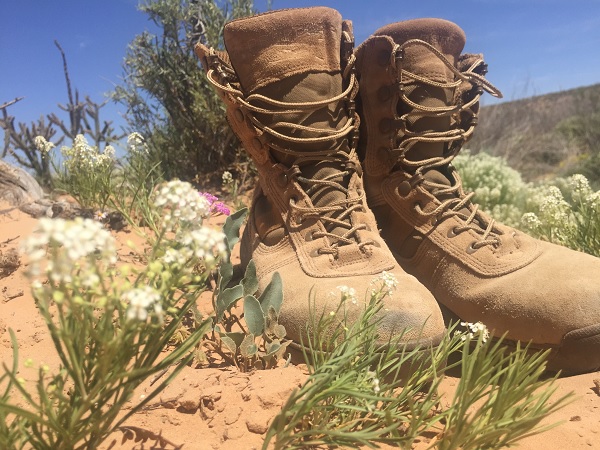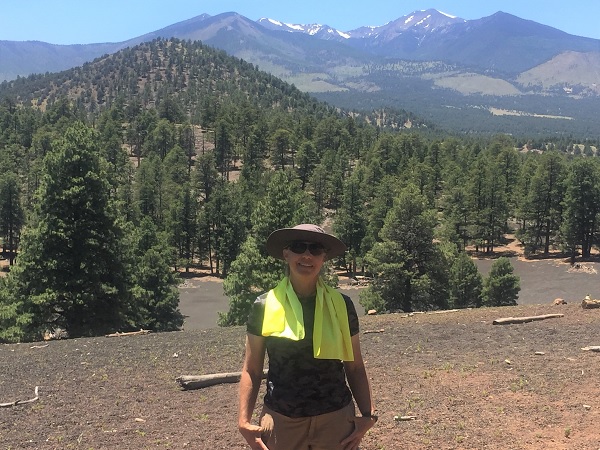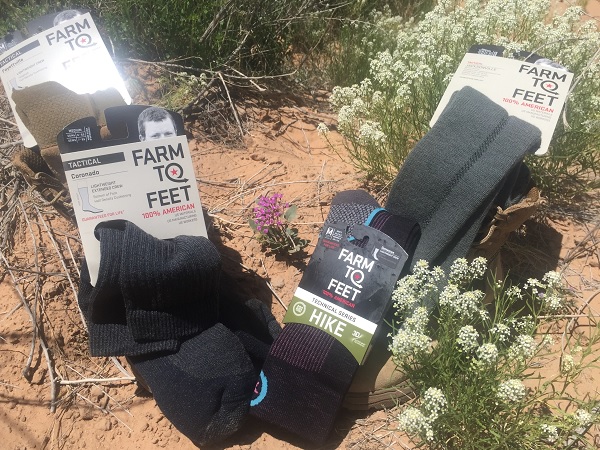6 Tricks to Survive & Thrive in the Southwest Desert
Eve Flanigan 07.17.19

As I write this, an EMT friend is carrying a stretcher and bevy of gear up Guadalupe Peak, the tallest point in Texas, not far from my home. This makes the fourth time this year emergency crews have had to hike the mountain to rescue a survivor or recover a body. And that’s not unusual. Headlines about days-long searches for lost or deceased hikers—usually hailing from the northeastern US or western Europe—appear annually. Often, these individuals collapse or die on marked trails that are less than five miles round-trip. These traumas and tragedies are, with a few exceptions, easily preventable. To be fair, I’ve had three locals collapse with little warning after just an hour or two on a literally hot range. All were women who don’t venture far or long from air-conditioned quarters on summer days.
It is possible to safely explore and enjoy the Chihuahuan and Sonoran deserts of the Southwestern United States in the summertime, with simple pre-planning. Here are some tips from a native Yankee who’s called the Southwest home for a long time, and whose National Parks hikes are generally done in mid-summer.

It has been my observation that hikers from more humid, lower-elevation areas use logic from those climates that simply doesn’t work in the desert. It’s easy to underestimate the effect of the outdoor environment when there’s little to no sweaty dampness on your clothing and when the sun seems ideal to improve your tan.
1. HYDRATE
Carry a gallon of water or other non-caffeinated, non-alcoholic beverage for every five to ten miles of hiking. Adjust the amount accordingly for distance. A back-borne hydration pack with a drinking nozzle is the easiest way to ensure constant access and keep your hands free, and encourages ingestion of a couple ounces at a time at a slow rate—the best way to consume water to prevent nausea. Alternatively, two roomy fanny packs can carry plastic water bottles, which can be squeezed down to size to reduce bulk as water is consumed.
A recent visitor from Tennessee told me, “I’m not going to drink extra water on the way to the Peak because I don’t want to pee on the trail.” Later that day, after hiking in only 80-plus degree heat, she complained of a headache—a sign of dehydration when combining lack of hydration with exercise. You need not have a sloshing stomach as you walk, but rest assured if you haven’t had to pee in six hours while in the desert, you’re dehydrated!

2. SALT AND SUGAR ARE YOUR FRIENDS
Many health-conscious types think of sodium as bad. But consuming plain water can cause an electrolyte imbalance, especially when you don’t realize that sweat is evaporating instantly. Consuming salt, even a dash right out of the shaker or better yet, on some roasted peanuts that travel well in a pack, is absolutely essential when exercising in desert heat. A modest amount of sugar doesn’t hurt either. Alternating between sports drinks and water is a good strategy for getting both; a mix of honey roasted and salted peanuts is even better as the act of eating can by itself be a comfort if you get lost, sore, or discouraged.
Part of the joy of being in nature is self-observation. Slow down and pay attention to any cravings; feed them accordingly. Along with infrequent urination, the tendency to stumble and a feeling of confusion are signs of low hydration and/or electrolytes. Act on these symptoms when they occur.
3. COVER UP
My enthusiastic but naïve guest from Tennessee consumed the better part of a bottle of aloe vera gel when she arrived home from her hike to Guadalupe Peak. Though about 30 percent of the nine-mile roundtrip trek is in the shade, she insisted that her tank top and shorts were necessary to “stay comfortable.” Look at old pictures of cowboys from the area, or stop and talk to a working farmer or rancher today, and notice their seeming attachment to wide-brimmed hats, long sleeves on light-colored, loose-fitting shirts, and never shorts. They know the value of shade, and that when none is available, it’s necessary to wear your own. A wide-brimmed hat preserves keen eyesight and, unlike a baseball cap, keeps the sun from cooking exposed neck and ear skin. Thanks to the effect of the sun’s radiation and increased base altitude, it’s still easy to tan right through clothing in the Southwest!

The right accessories can make a big difference, and they need not be high-tech. Long sleeves of 100 percent cotton material provide great resistance to thorn penetration and snags. This year, I’ve been using a Frogg Toggs Chilly Pad. It’s like a car-washing chamois, except with cooling, waffled texture. One good soak lasts about two hours in 100-degree heat. So long as there’s at least a little ambient air movement, wearing this small towel as a scarf is the equivalent to a cool, refreshing dunk for the skin. I often find myself enjoying additional relief by putting the pulse-point side of a wrist against the towel, which lends an instant cool-down feeling for arms and hands.
4. IF LOST OR INJURED, BE STILL AND SEEK SHADE WHEN THE SUN IS HIGH
Successful desert survival includes energy conservation. The burning sun is an energy-sucker! If you need to rest, or become lost or injured, try and do so in a place with some shade. Though this can be hard to find in some places, even a narrow strip of shade offers significant relief and value.

5. PRESERVE CELL PHONE BATTERY LIFE
A recent Guadalupe Peak rescue turned into a costly and dangerous overnight exercise for all involved when the lost hiker’s cellular connection to the rescue station was lost. He’d been told “stay off your phone,” but gave into the temptation to use his phone as a distraction from the predicament. Keeping location services on can help rescuers locate you, but is also a big-time battery drain. Add that to calling, texting, or using the internet and battery life is short.
Portable solar chargers are lightweight and can provide some remedy for battery loss. But overnight, even this low-level charge may not be sufficient to keep your phone going if you insist on using it.
6. LEAVE BEACH FOOTWEAR AT HOME
In addition to the obvious risk of burning from open-top footwear, desert terrain of all types—sandy, rocky, cactus-strewn, partially forested—is unforgiving to the poorly shod. Thick hiking soles provide the best, but not entirely reliable, protection against cactus and bush thorns. While leather boots may seem like overkill to those who prefer traveling light, the offer ankle support and the best hope of penetration resistance to a common and usually well-camouflaged desert dweller, the Diamondback rattlesnake. This year, I’ve been using Propper’s Series 100 boots for hiking. They seem not to chew through laces as quickly as most, and their light color doesn’t absorb heat. I’ve not yet had a thorn completely penetrate the sole, and those same textured soles offer lots of traction on moss-covered rocks and pebble-strewn slopes.

Of course, great footwear includes socks that allow you to enjoy the hike and forget all about footwear. This year, I’ve made the acquaintance of Farm To Feet, a North Carolina sock manufacturer. Farm to Feet socks are uniquely crafted not like a generic tube but in the shape of a real foot, without irritating seams. They offer support and cushioning right where it’s needed. Their medium-weight tactical and Damascus socks are medium in weight. These socks haven’t become sweat-logged while hiking, nor have they taken on the terrible stink at day’s end like some socks do. While the tactical pair did begin to pill after one hike, their fit and value has been proven after repeated washings and day-long wear with many miles logged. This is very practical sock brand, entirely US-made, and good-looking to boot.

The great Southwestern Desert is not only my home, it’s one of the few places on earth where it doesn’t take much effort to find escape from a hectic modern life, links to ancient civilizations, breathtaking sunsets, and dramatic natural beauty. To those unfamiliar, it can dish out suffering and death with an unfeeling hand. To the prepared, it offers endless adventure and discovery. I hope you’ll visit some summer, and do so with these preparations so you’re free to make great memories with what the region has to offer.

